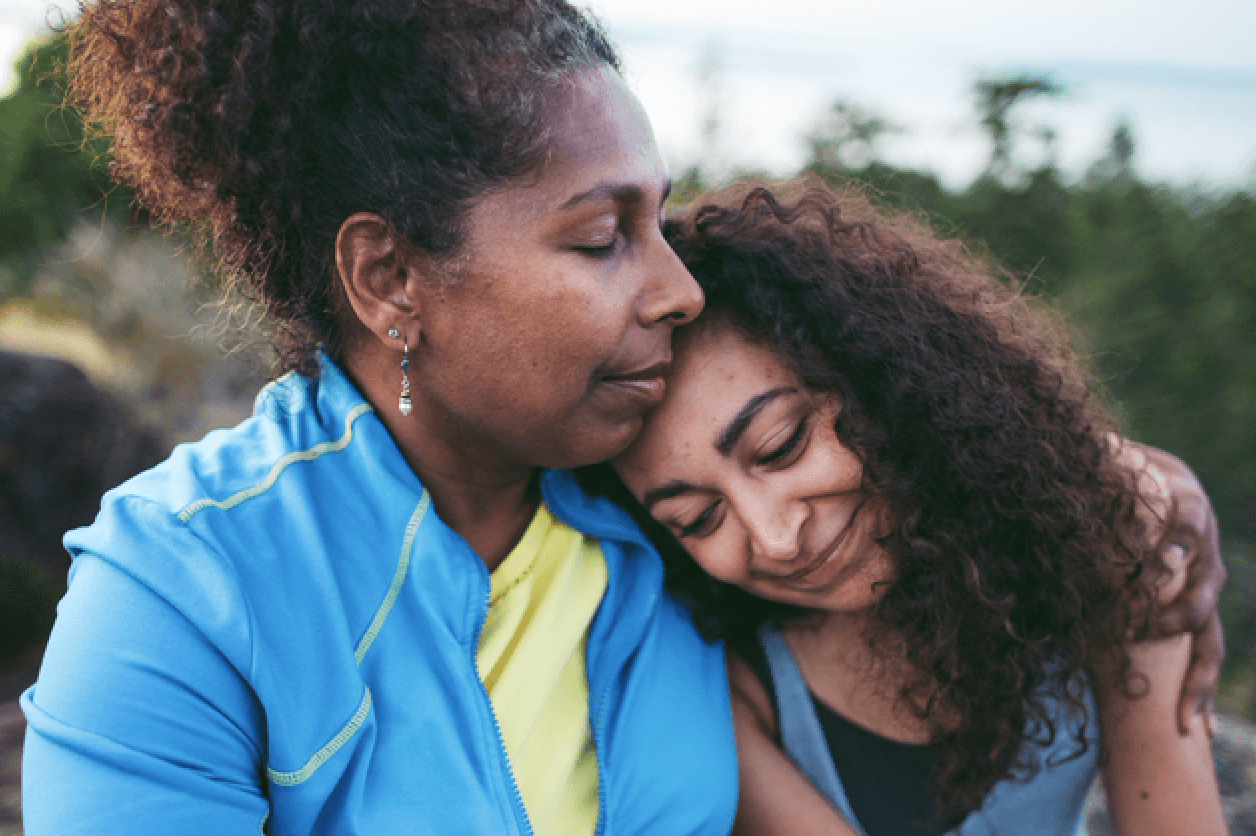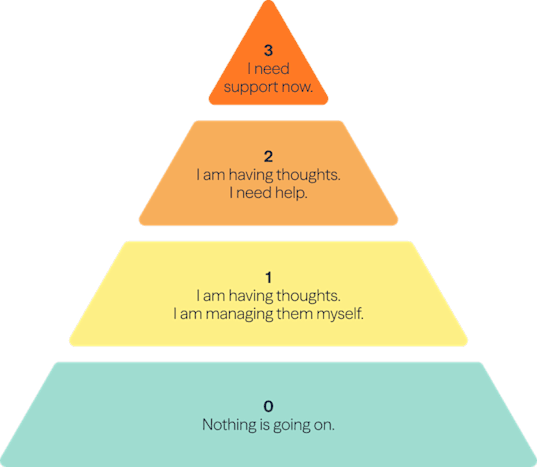Talking about safety
Any identified safety concern — especially when it’s about your child — can feel uncomfortable. But talking about that concern is the first step in keeping your child safe.
Contrary to popular belief, talking about these concerns will not increase thoughts or actions about suicide or self harm.

Tools for talking about risk
If you need immediate support
If this is an emergency and your child is in immediate danger of harming themselves or others, call 911.
If your child is in distress and needs to talk to someone right away, call or text 988 (Suicide & Crisis Lifeline). You can also chat from a computer at 988lifeline.org.
Please consider your child’s or teen’s safety and the safety of others when deciding whether to transport them in your own vehicle.
If you are unable to safely transport your child, call 911 to have them transported.
Additional helpful resources
We’ve gathered several independent resources that you may find to be valuable sources of support and information. While they are not affiliated with Brightline, we are providing links to them here in an effort to connect you with helpful services.
External help
Independent crisis resources
National resources
American Psychological Association: Crisis Hotlines & Resources
National Suicide Prevention Text line: (800) 799-4889
Reach Out Boys Town National Hotline: (800) 448-3000
Spanish Language Lifeline Number: (888) 628-9454
National Domestic Violence Hotline: (800) 799-SAFE (7233)
Domestic Abuse Helpline for Men and Women (DAHMW): (888) 743-5754
STAND Against Domestic Violence Crisis Hotline: (888) 215-5555
The National Sexual Assault Hotline (800) 656-HOPE (4673)
Safe Horizon Rape, Sexual Assault, and Incest hotline: (212) 227-3000
California resources
California Department of Public Health: Crisis Hotlines, Warmlines, and Resources
California Youth Crisis Line: (800) 843-5200
Spanish Language Lifeline Number: (888) 628-9454
American Psychological Association: Crisis Hotlines & Resources
National Suicide Hotline: (800) 784-2433
National Suicide Prevention Text Line: (800) 799-4889
How to talk to your child about safety
Any identified safety concern — especially when it’s about your child — can feel uncomfortable. But talking about that concern is the first step in keeping your child safe.
Contrary to popular belief, talking about these concerns will not increase thoughts or actions about suicide or self harm.
Be clear and direct
“Thank you for telling me that you are having thoughts of hurting/killing yourself. It probably felt hard or scary to tell me that, and I’m grateful you did. Can you tell me a little more about the thoughts you’re having?” (Try to get a sense of when this is happening and how often.)
Take them seriously
“You are really important to me. I want to ask about when you said life isn’t worth living. Can you tell me what you meant by that?”
Validate and empathize
“That sounds really hard and scary. Thank you for sharing it with me. I can totally understand how that situation would feel so tough. I’m here for you; we will figure it out together.”
Make a plan
Watch the video below to learn more about making your own safety plan with your family.
Making a Personal Safety Plan Video
Download Safety Plan PDFs
Continue the conversation
How your child feels will change throughout the days and weeks, so it’s important to keep an open stream of communication.
Having a quick and easy way to check in can help families communicate more easily.
Decide how your family will check in with each other about the current level of safety or concern; take an approach that you feel will work best for your family. Here are some ideas: a number system, a color system, or code words (different words for different levels of concern).

Home safety interventions
There is nothing more important than the safety of your child and your family. The following is guidance around preventing a safety crisis with your child.
If you believe your child is at risk of harming themself or someone else, or if someone (like your child’s therapist, teacher, or coach) has expressed safety concerns about them, please consider following the steps below.
Supervision
When your child has shared a safety concern, one of the best ways to ensure their safety is to come up with a supervision plan. In this instance, “supervision” means being physically present, in close proximity, and able to check in quickly.
Based on the specific things your child is thinking about, it will be important to consider how, when, and where trusted adults can supervise the safety of your child. You may find it helpful to collaborate on a supervision plan as part of your safety plan.
Depending on your situation, examples of supervision may include:
Having your child leave the bathroom door ajar (not entirely open) while occupying the bathroom and checking in verbally if the bathroom trip is taking longer than expected
Ensuring there is someone to hang out with your child in person after school
Sleeping in the same room as your child
If you have questions about what supervision plans for a safety event should look like for you and your family, it would be a good time to check in with a mental health expert.
Safety-proof your home
Lock up objects your child could use to hurt themself or someone else; below is a partial list of items. Additionally, if your child is engaging in destructive or aggressive behaviors, lock up items that may be easily broken or used as a weapon.
Ensure that your child does not have knowledge of the location of these items or how to get access (i.e. where keys are kept or what combinations unlock storage).
Medications: All medication, including those sold over-the-counter
Sharps: Such as knives and razors
Belts, cords, ropes, and sheets
Firearms and ammunition: These should be kept in separate locations from each other
Any other object that your child has mentioned thinking of using to harm themselves or someone else